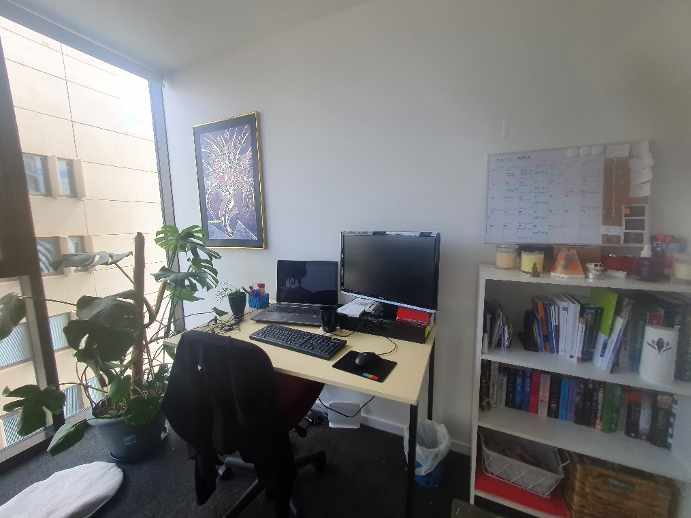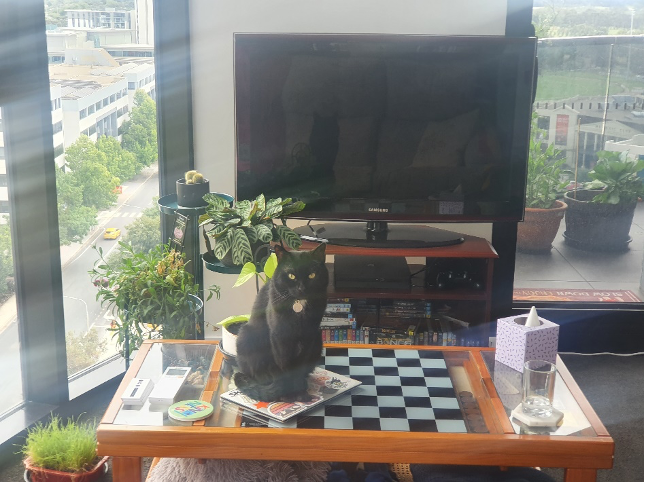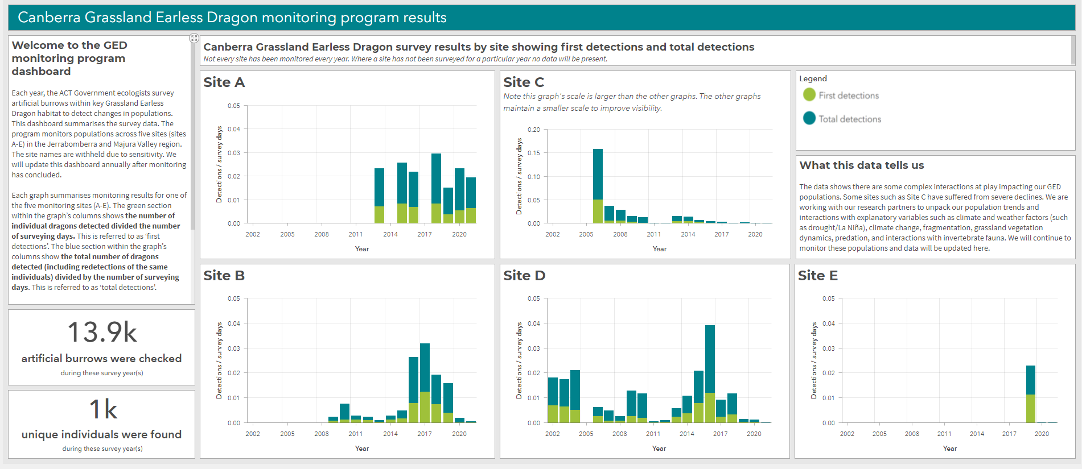ACT Government
Alannah Freeman
Spatial Ecologist at ACT Government
Bachelor of Environment and Sustainability at Australian National University (ANU)
6.30 AM
It’s almost time to wake up and my cat knows. He jumps off my bed and goes to check on the rest of the house. After ten minutes he returns and starts meowing to get me up and get breakfast. In addition to looking after my cat my morning routine includes tending to my many houseplants and balcony veggie garden. The fresh air helps me wake up and then I’m ready for the day.
8.00 AM
I drive 30 minutes to a field site to start the day’s work. My primary job is to help the team’s ecologists manage their data and maps and perform spatial analyses. Sometimes this also means I get to assist them in the field. Today we are conducting surveys for an endangered reptile, the Grassland Earless Dragon, in their grassland habitat.
We start by checking our field packs and equipment, then send a message to the landholders to let them know we’re on site. Wherever we go we always have to check in either with the landholders or park rangers. This helps us build relationships with other land managers and also keeps us safe since they know where we are in case of an accident.
It’s very windy today and there’s a storm coming in so we move fast. Our tasks involve checking artificial habitat placed out to attract the reptile and recording our survey results on an iPad. Today we don’t find any, but it is not surprising given the weather. The team will come back next week to check again.

Work site 1: Grassland

Worksite 2: At home set up
11.00 AM
We’ve finished our surveys so I head home. After walking through the long grass, my boots and pants are full of grass seeds so I get changed. For the rest of the day I will work from home. I am also a caregiver, so the flexibility to work from home really suits me. I have rostered days in the office too and then field work sometimes so I still stay in contact with the team. I start up my computer and while it loads, I make a cup of coffee and check in how things are going at home.
11.30 AM
After being out for the morning, I check emails and Teams to see what I’ve missed and if anything urgent has come up. There’s been a lot of chatter in the social chat (this is how we stay connected working from home), but otherwise it’s pretty quiet. There’s a few emails responding to draft data collection templates I had circulated for comments and feedback. The suggestions are fairly simple so I work on updating them in Excel now.
12.30 PM
Lunch time! My team is very flexible and you can take a break whenever you need so long as you record it. When I’m working from home, I have some time to cook if I want and I generally eat with my sister (who I live with). Today we have makeshift pizzas and talk about plans for the weekend. My cat sits and watches patiently from the coffee table. Since he is a rescue he loves food a bit too much, but we’ve trained him to stay out of the kitchen while we cook and eat, and he gets a biscuit if he does.

My cat waiting for a treat at lunch.
1.15 PM
Back to work. Since I have no meetings this afternoon, I take the chance to do some harder work without distractions. Currently I am trying to build an accurate map of threatened species habitat across the region. This will feed into a larger project to guide land management and decision making. It sounds simple, but in practice, spatial analyses can have a lot of error! So I do some research on code and software forums to see if I can find solutions to some of the barriers I identified yesterday.
I start testing some of the solutions I find online. This requires me to run analyses and conduct visual inspections within our software program. This can be slow depending on the size of the dataset so it is imperative to be a good multi-tasker. While the analyses run, I write up my findings and questions, which I will take to my manager at the next weekly meeting.

example of the work a spatial ecologist does. This was a data visualization project I did for the Grassland Earless Dragon, which is publicly available.
3.00 PM
It’s the end of the day for me (due to my carer role, I work part-time). I start making tomorrow’s to do list and closing my software programs. I fill out my time-sheet to track today’s hours and then log off. The rest of the afternoon I’ll spend with the person I care for.
6.00 PM
About this time the tasks for the day are done. Some nights I head out to see friends or exercise, but today I am feeling the impacts of walking through the grasslands all morning. I go for short walk near home and then come back to cook dinner.

Kayaking after work (some nights)
8.00 PM
After dinner, I switch off and take time for me. Today I spent half an hour studying French online and then read a few chapters of my book.
9.00 PM
My cat often gets the late night "zoomies,” so I spend some time before bed playing with him to get rid of that energy. I’m in bed by 9:30pm most weeknights to make sure I have plenty of energy for the next day. That’s it for today!